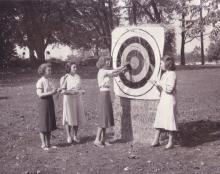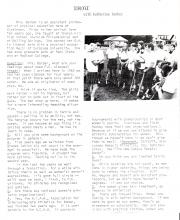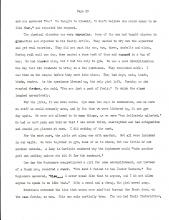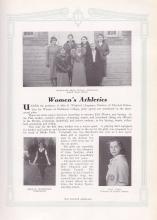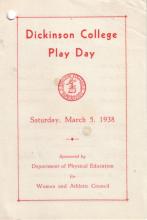1932 Portrait of Dickinson Female Archers
Photograph taken in 1932 of female archers within the Dickinson College's Physical Education Department. It can be found in the Josephine Meredith Scrapbooks as well as in the 1932 Microcosm, page 234. In the back row, left to right, are Eleanor F. Peters '34, Mary E. Bell '36, Jeanne C. Whittaker '33, Dorothy Hillig '33, (and in front, left to right) Elizabeth M. Pyles '34, Helen M. Epler '34, and Mary L. Loy '31.


